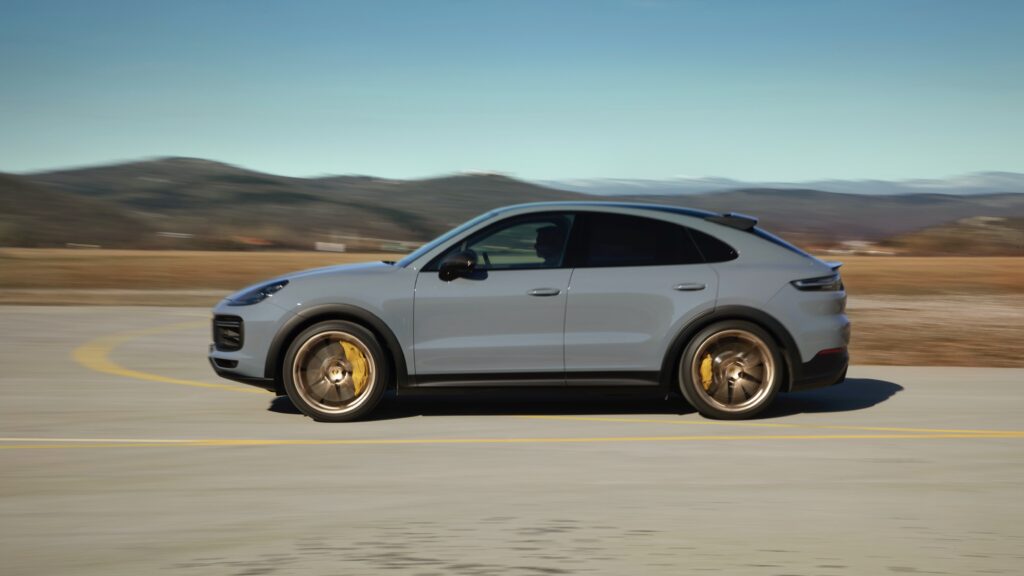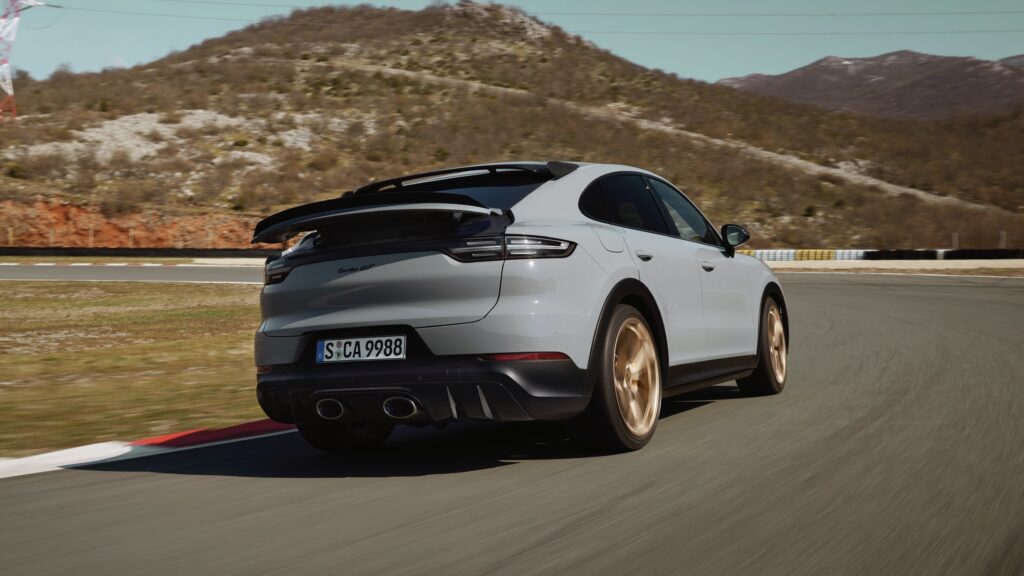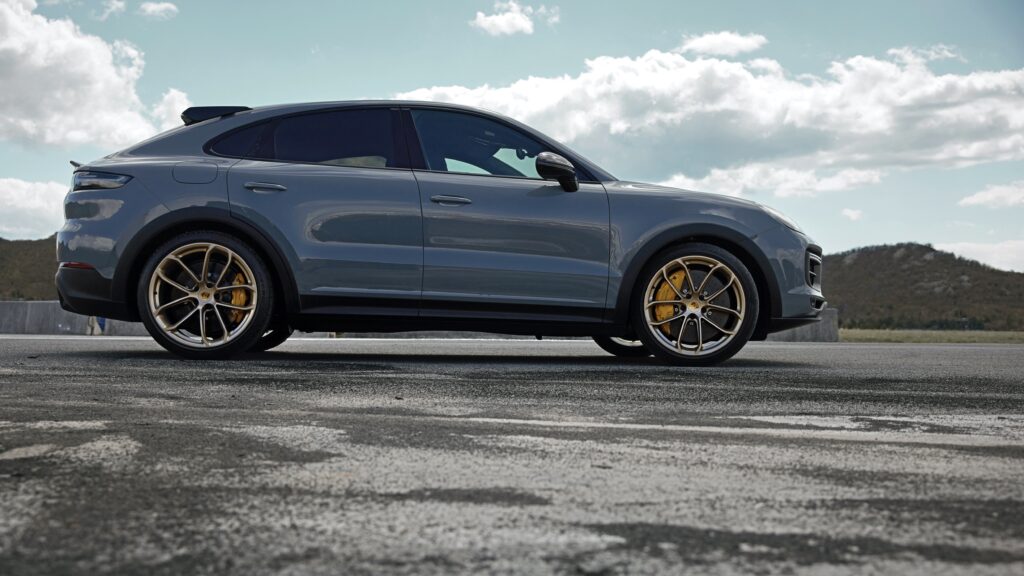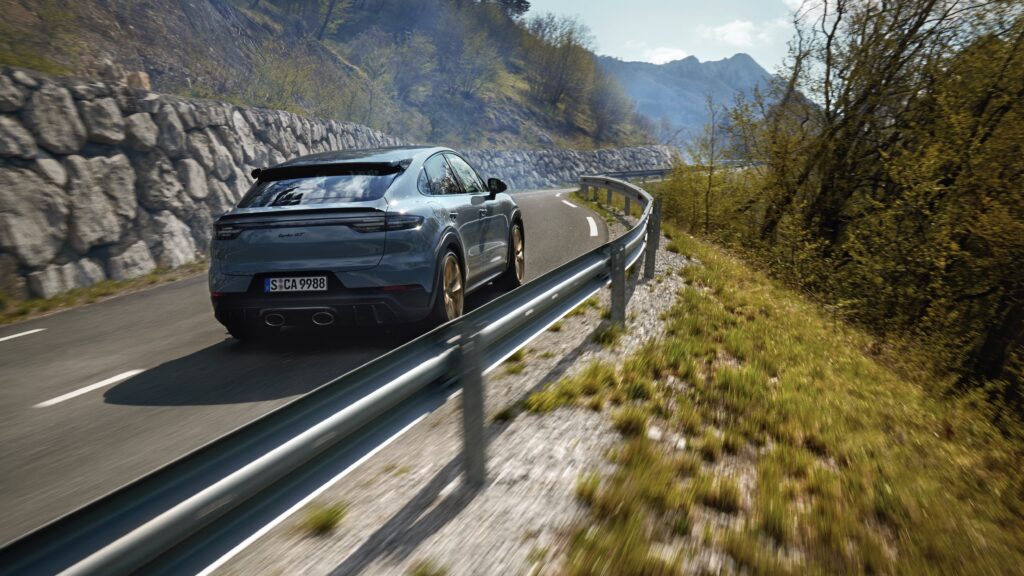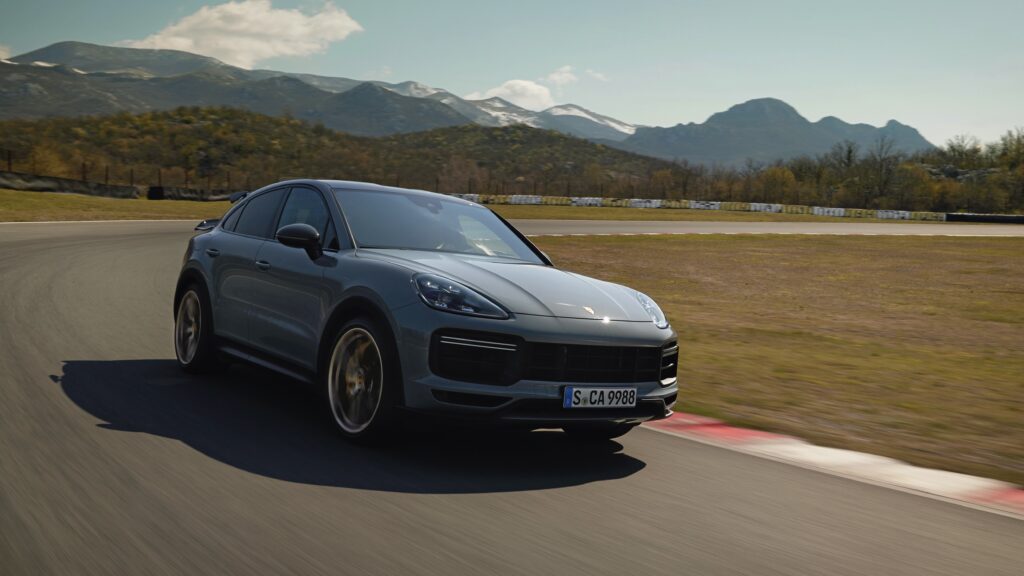
Just over 200 miles removed from the heart of the Black Forest, lies the world’s most iconic racetrack and the most hallowed testing ground for anything on 4 wheels. Legends have come and gone, from the SLS AMG to the Lamborghini Murcielago. Yet it’s a family hauler who has trumped nearly every single one of them. 0-60 in just over 3.3 seconds, an 8-speed dual clutch transmission, and perched upon Pirelli summer tires? Is this the new GT3? More like Porsche’s new villain, the Cayenne Turbo GT. A 631 horsepower kid carrier with “made you look” written all over it. Despite the Cayenne Turbo GT’s subtle cover letter, its resume is filled to the brim with credentials. Its twin turbo 4.0 L V8 stems from a strict racing heritage, groomed and raised by Porsche itself. While you can take your kids to T-Ball practice in this, you’ll be bringing more than Caprisuns and orange slices to the after-practice snack. You’ll be bringing a car that beat countless supercars on that famed racetrack we mentioned. The fabled Nurburgring.
7:38:925 is no easy feat. Holding the record for the fastest production SUV around the German track, it absolutely demolishes the previous record holder— the Audi RSQ8. While just a couple years ago, automakers were beginning to scratch 8 minutes on their SUV times, and with just a couple of cracks at it, the Cayenne Turbo GT sets a new benchmark for any SUV to try and hone in on. Powered by a twin turbo V8 that yokes out 631 horsepower and 626 lb-ft of torque, the new GT can do more than show out at your kid’s Montessori. Sitting on an AWD platform that sends power with a rear wheel bias, Porsche has taken cues from its own lineage to create a valid competitor in such a saturated segment. The new GT will be pitted up against heavy hitters like the BMW X5M, the Mercedes-Benz AMG GLE-63, and even American competition like the Jeep Grand Cherokee Trackhawk and the Ford Explorer ST. Albeit the latter don’t fall under the coupe category as the Turbo GT does, but consumers will lop all under the same umbrella.
Creating an even more high performance version of the already speedy Cayenne Turbo wasn’t a walk in the park nor in car terms a practice lap around the track. Serious upgrades had to be done to the Cayenne in order to produce the world’s official fastest SUV. While you think the basics would be shared between the trim levels, you’d sadly be mistaken. Porsche started from the ground up, including a massive engine overhaul. While the engine maintains its V8 platform, Stuttgart has revamped everything. New crankshaft, ported heads, connecting rods, and forged pistons all sit themselves inside the hood. Increased boost and a new compressor wheel within the two turbos themselves play a pivotal role in adding power. In addition to the added power, the components can also handle much more power, especially with the aforementioned forged and ported pieces.
Underneath, a new valved sport exhaust system creates a rumble from the twin turbo V8, letting everyone know that this isn’t your normal family hauler. Instead it’s got the power of over 3 Toyota Corollas smacked under that gargantuan hood. To keep par with its unworldly performance, the GT got some new aero features. Prominently featuring a rear chassis mounted wing, a new body kit including carbon fiber trim scattered around the exterior. Porsche states that the new wing’s lip is 25 mm bigger than the Turbo’s wing, creating downforce more suitable for the track. They’ve accredited their lower Nurburgring time solely to the use of better aerodynamic bits and pieces, and none plays a bigger impact than reducing rear-end lift, something SUVs tend to struggle with, especially at high speeds. To keep temperatures down and maintain the best AWD power distribution possible, the transfer case is now water cooled, in contrast to most cases being air cooled and getting heat soaked. An issue that has plagued some of our other performance SUVs in the past, I’m looking at you X5M. A new rear diffuser has been fitted with better heat resistant material in order to accommodate two goliath sized tailpipes. Drawing resemblance from the old Audi R8 tailpipes, those things look like rocket launchers with how wide they are. Interesting to note that Porsche strayed away from the quad tailpipe design on the Macan and Turbo Cayennes, instead opting for practicality over look and design.
The Cayenne Turbo GT also will put Porsche’s new infotainment system front and center, in addition to the high trim level coming standard on the interior. Eight-way sport seats in the front and a sport rear seat system with two seats are standard. They each come GT-specific with perforated seat centre panels in Alcantara, contrast accents in Neodyme or Arctic Grey and ‘turbo GT’ lettering on their headrests. As is expected on Porsche’s sports cars, the multifunction sports steering wheel features a yellow 12 o’clock marking. Depending on the specified trim, select accent strips are finished in matte black.
As always the Cayenne Turbo GT comes with electronically controlled suspension and shocks, and has been lowered 17 mm from the stock Turbo. Porsche says the rigidity of the air chambers within the suspension has been increased 15%. Power steering has also been boosted as well as an assist system added. This however can be turned off for a more pure driving experience.
It’ll be interesting to see how the Turbo GT stacks up against other vehicles in its class, especially in such a saturated market. The GT starts at just over $181,000 and is set for launch in September 2022. As more SUVs tinker with the EV side of things, it’s good to see V8s are still alive and well.


